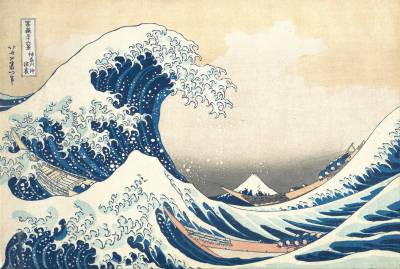
I mean just look at it people… Take a deep breath. Really take it in, even if stylistically it isn’t your cup-o-tea. There is much to be learned here. It is turbulent, dangerous, while at the same time, so well composed that there is a calmness. A serenity in the inevitable crash that is coming. We are resigned to it, yet just might survive it. Why?
When I was first teaching I would show students this image and say, “Your painting needs more of this.” Which would often leave them scratching their heads.
It is a feeling right? A contrast of chaos and stability, where every element is placed just so… achieving some hope in an otherwise dire situation. Walking a line that could end in disaster or triumph. I believe it is this duality that has made this image familiar to generations. Time to break it down.
Note I have never read about this painting. What I am presenting are conclusions I’ve arrived at with no outside influence, simply me looking at a masterpiece and trying to figure out why it works so damn well. Actual Hokusai historians may totally disagree with me.
First lets talk about the danger. Yes it is obvious, the wave is about to crash on the boats. But how do we know it is dangerous?
No 1: The wave is the highest and largest thing in the image. Higher even than Mt Fuji in the distance. Think about that. The artist is showing us that this wave is more powerful than a mountain by some scale. Fuji could have been much bigger but Hokusai made it smaller than the smallest peak of the wave.
No 2: Get out your claws. The wave design could have been anything. The stylization could have been much softer, rounder- but no, the artist chose to make them claw-like. And did in multiples, like a wave of tiny rats about to hop into your bed (or boat in this case). He also implies that the rats will indeed overrun us, how? Note on the right of the image, the highest section of the wave has many smaller claw-like shapes on it. Optically we make a leap from the magnitude of danger on the left to the right. It implies time because they are reduced in scale and are a little calmer than on the left. Showing us that this too shall pass. The question is, will we survive?
No 3: I believe the placement of the wave cutting across the foremost ship(s) was premeditated. The effect in the quick glance is a ship that already feels broken in two. This could end very bad.
Second lets talk about the hope.
No 1: As chaotic and spiraling as this situation is, there is also stability here. It has to do with how the wave is supported. Check out the direction of the lowest waves. Like hands reaching up to support a crowd surfer at a concert, the implied lines or directional-energy, lift that wave. Maybe our sailors will survive? Maybe the crowd won’t drop that surfer on their head? Lotta risk though.
No 2: Lets take that to the next step in the progression (and reassurance). Do you see that big cloud? It is no coincidence that the shape of that cloud is similar to the wave. So what does it do? Well first the repeating shape implies time, like two frames of an animation reel. Second (and this is where the hope comes in.) it is a cloud and clouds are light vs. the heaviness of the water- the implication on the time-line is that, maybe, just maybe, that wave will pass over the boats… maybe it won’t be that bad. But it is gonna be close. The tension is exquisite.
No 3: The final bit of hope comes from the mountain in the distance. Remember, Mt Fuji is a volcano. And what do volcano’s do? Errupt. The artist is keenly aware of this. Don’t for a second think its placement is random. Hokusai has done many images of Mt Fuji. If you take into account the peak of the cloud being centered over the volcano- which itself is like an arrowhead pointing straight up, the result is incredible visual ‘lift’, even if it is all implication and not spelled out for the viewer with a literal eruption.
And that my friends is probably the beginning of what one could unravel in this masterpiece. Life, death, hope, destruction- all in one image. No easy task.
Now some of you may be saying, “I don’t know Fischer, sounds like a lot of artsy-fartsy talk about what were probably random decisions.” Maybe, (I really don’t think so) but at a minimum they were instinctual. Before you pull the tin-foil hat off my head, lets look at a couple other wave woodblocks by Mr Hokusai. Do you remember any of these??? Have they been seared into your retina? Can you close your eyes and remember them months after you last saw them? Hokusai was doing images like this for 30+ years before he composed “Great wave of Kanagawa”. I imagine he learned a thing or two along the way. Hell just look at the difference in the way he did the claw tips of the wave crests. Which is more threatening?
And even if I am reading things into this, “Hurrah!” I say! This is the level of thinking we should all strive to put in our paintings. These realizations effected me so much I had to pay direct homage to Hokusai in my Kiora painting for Magic the Gathering.


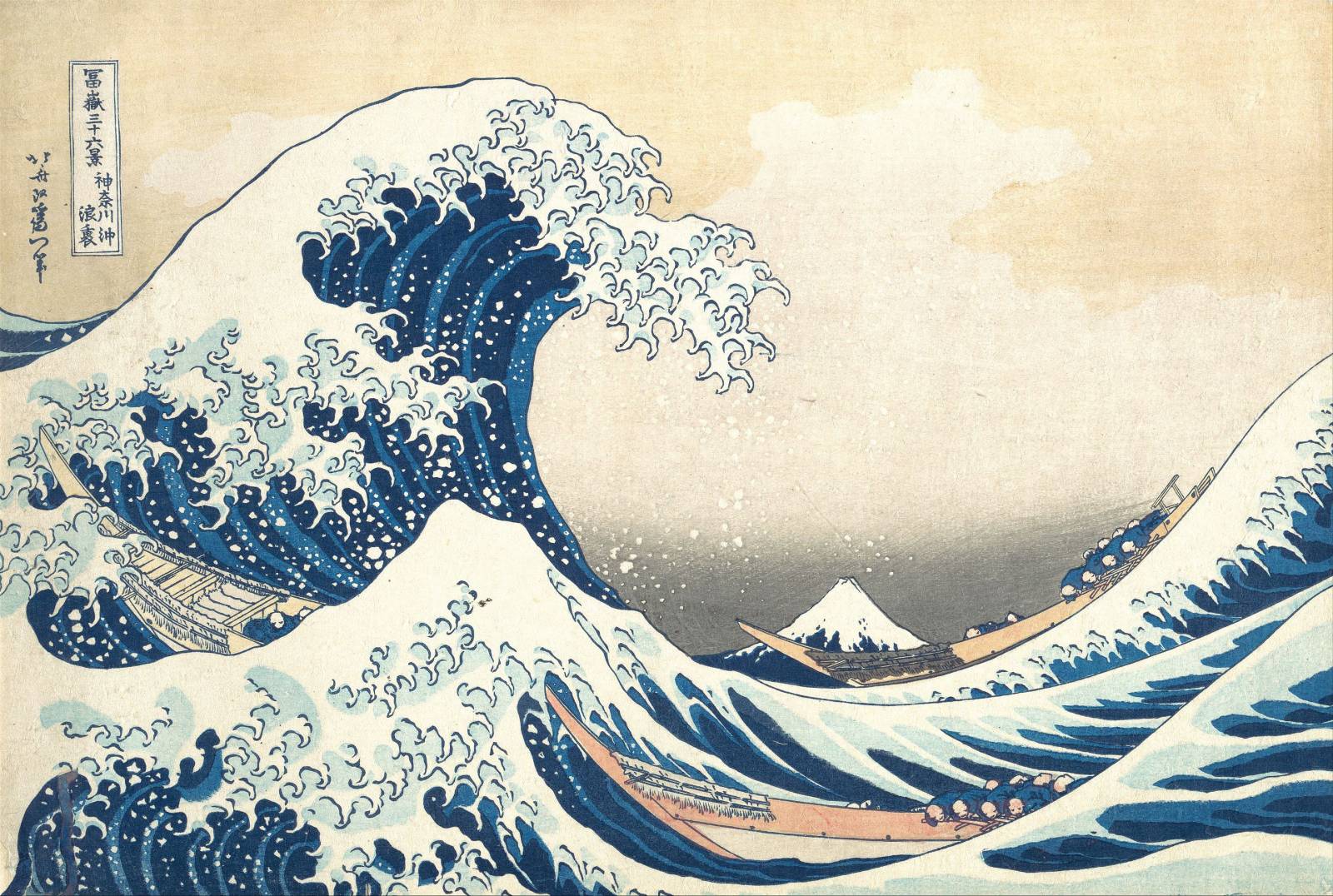
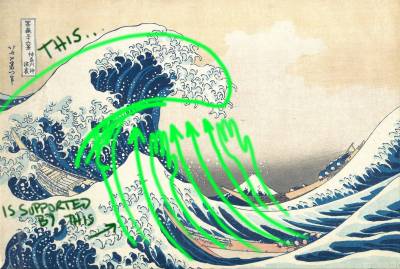
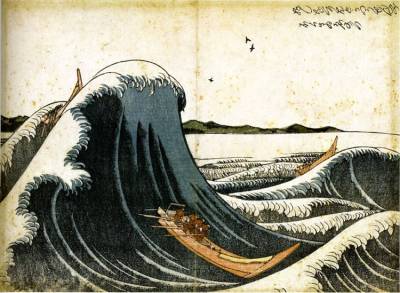
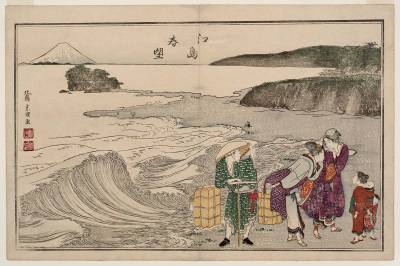
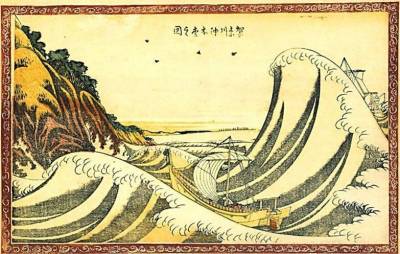

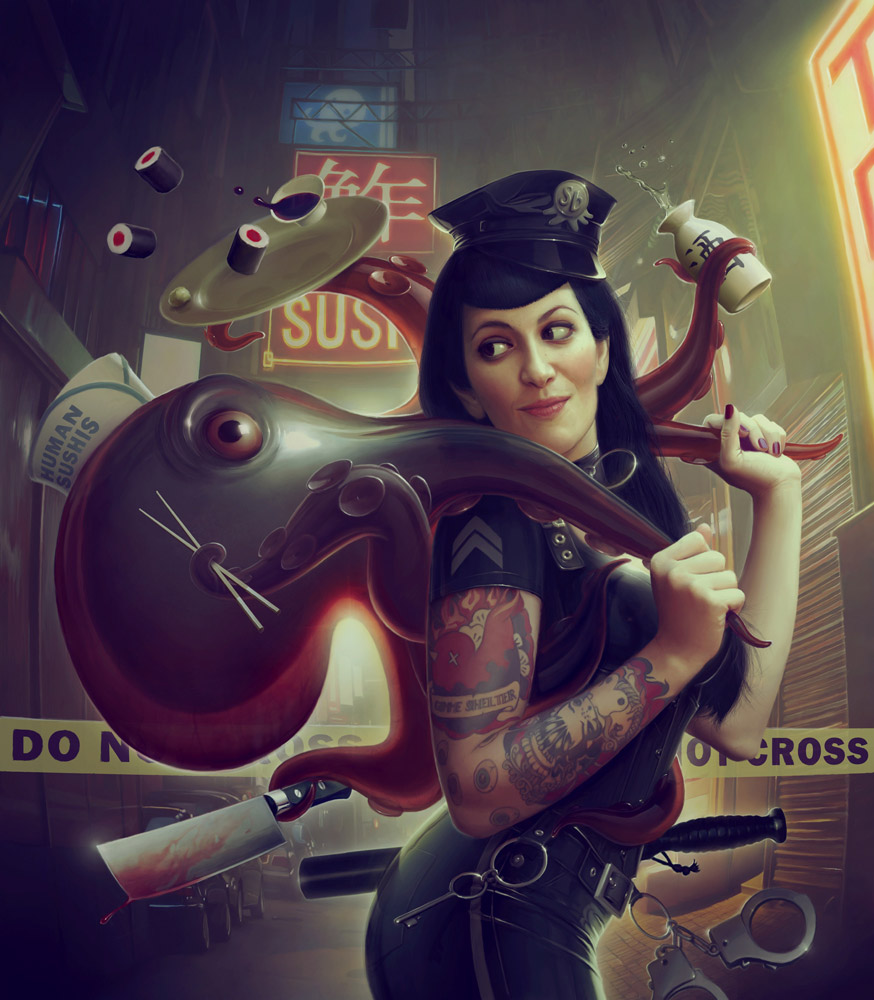
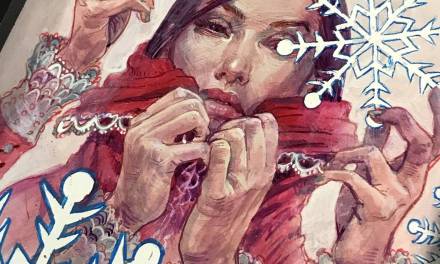
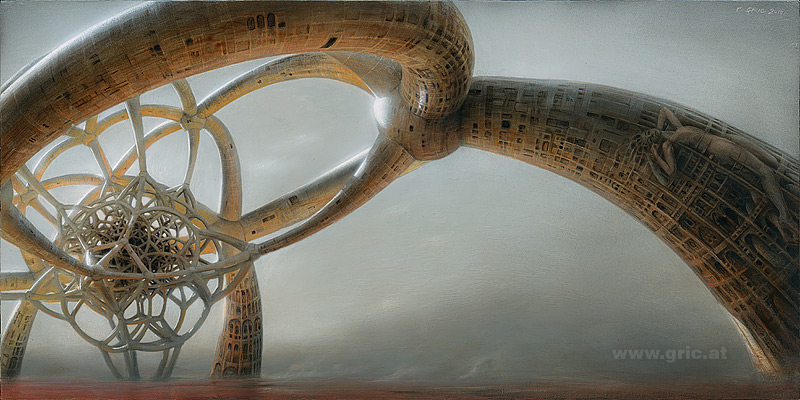
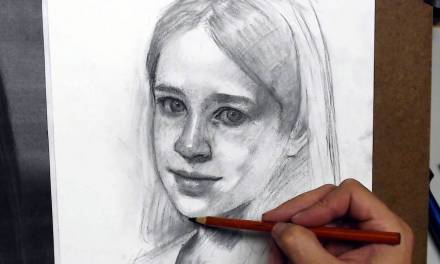

Very insightful. I especially like your take on the “claws.” Hokusai was a real master of his medium and his work can be addicting to look at. Good article on an all to familiar piece.
Thanks for checking it out Tom! Indeed, sometimes it is worth reevaluating the classics to understand what made them so popular. Certainly, this image was shown more than other Hokusai, and that alone makes it memorable, but there must be a reason is was shown so much to begin with!
Hokusai has to be one of my favorite artists. I was shown this picture as a kid and was told it was called “nature’s yingyang” because the sky and the water form that shape. His life story is absolutely fascinating and the level of creativity he had was ahead of his time. He was the first manga artist I’m aware of (which at the time meant random drawings), would do compositions that could only be done with modern camera equipment, was known by several names and the fact that we have so much of his art is astounding to me since at the time his art was often done just to help sell books and his home burned down. IMO he was the Kim jung gi of his era. I could go on but David Bull has some great videos that really illustrate his genius. https://www.youtube.com/watch?v=aolrKbqxqmA&list=PLK-Wicsj5rAbhRUOqhI85FZAN7df9KlZv He even did a series where he recreated the great wave and tells the story of we actually don’t know what the original great wave is since it was famous early in its life and since copyright wasn’t a thing yet dozens maybe hundreds of knockoffs have been made.
Love it!
And living in Kanagawa.
He’s daughter was also pretty awesome. And apparently she helped him.
Not sure if she helped him on this image, or if she influenced him in any way.
But, it’s sooo fascinating and really worth researching.
Loved this post and I feel that you hit the nail on the head with that break down too, it was a great addition to see the other works too and envision the build up of knowledge and intent that led to the ‘great wave’. I’m definitely interested in reading up more on this subject now.
Agree with all of it, awesome article!
My take on its stability … even with all the moving lines, the image looks frozen in time. The sailors can be comfortable in the moment (hope), because the wave will not actually crash. A sense of serene limbo.
Absolutely loved your personal thinking on this piece. If you have more MC pieces like that, don’t hold back.
Thanks Christof, if you dig back in my posts you can see me break down a early Rockwell like this.